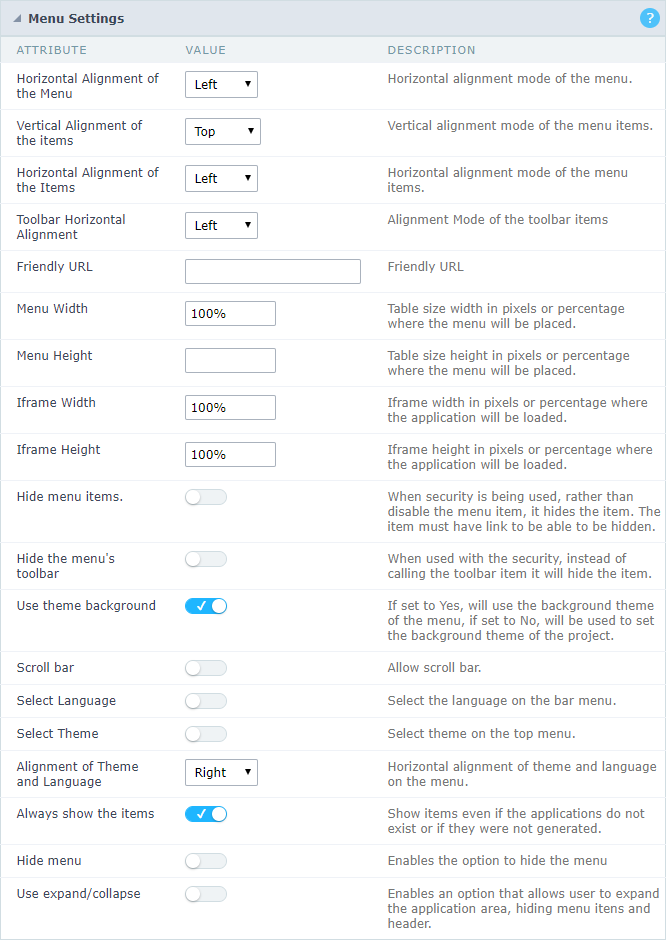

- #Hide column headings scriptcase how to
- #Hide column headings scriptcase full
- #Hide column headings scriptcase code
How to Connect to Exchange Online using PowerShell?.SharePoint Online: Switch Navigation to Horizontal or Vertical.Here we discuss how to hide columns in VBA Excel and the practical examples and downloadable excel sheet. This has been a guide to VBA Hide Columns. When you run the code, you will get the result as follows.
#Hide column headings scriptcase code
Here I want to hide all the columns if the heading is “No.” The below code will do it for me. Now we will see how to hide columns based on the cell value. Example #7 – Hide Columns Based On Cell Value In these cases, the below code will hide all the empty columns. Here empty columns pattern is not standard.

In the previous example, every other alternative column was blank we have hidden easily. We need to use loops the below code will do the job for us.Ĭells(1, k + 1).EntireColumn.Hidden = True We need to hide every alternative column, which is blank. Example #5 – Hide Every Alternative ColumnĪssume you have data, something like the below image. Range("A5").EntireColumn.Hidden = True End Sub With just a single cell reference, we should be able to hide a column.
#Hide column headings scriptcase full
We don’t need to give the full column reference to hide the column. For instance, if we have data in cell A2 and want to use that in cell A1, use =A2 in cell A1, and this will copy the A2 value in A1. We can also hide a column based on a single cell reference Cell Reference Cell reference in excel is referring the other cells to a cell to use its values or properties. Example #4 – Hide Columns with Single Cell The above methods will hide the first three columns i.e., A, B, and C. We can use the following code as well to hide multiple columns in Excel VBA.Ĭolumns("A:C").EntireColumn.Hidden = True End Sub Range("A:C").EntireColumn.Hidden = True End Sub For the same data as example #1, use the following code to hide multiple columns. We need to mention the first and the last column so that in between columns also will be hidden. We can hide multiple columns at a time as well. And code for the same is given below.Ĭolumns(4).EntireColumn.Hidden = True End Sub We can use the column number as well instead of alphabetic reference.

And code for the same is given below.Ĭolumns("B").EntireColumn.Hidden = True End Sub We can still use the Entire Column property but not necessarily required. When you use Columns property, it is not necessary to use the Entire Column property. Here you must be thinking where the Entire Column property is. If you want to hide the column using Columns property, then the below code is for you. So when we run the code, we will get the following result. Range("A:A").EntireColumn.Hidden = True End Sub Now we will hide the entire column A using the following code. Based on the method we use, we need to construct our VBA code VBA Code VBA code refers to a set of instructions written by the user in the Visual Basic Applications programming language on a Visual Basic Editor (VBE) to perform a specific task. In VBA concepts, cells are also the same, no different from normal excel cells. We can hide a column by using a Range object by using CELLS property Using CELLS Property Cells are cells of the worksheet, and in VBA, when we refer to cells as a range property, we refer to the same cells. Then, at last, we need to set the Hidden property to TRUE. In the entire column property, we need to use the “Hidden” property.

Then we need to use the Property “Entire Column.” Range("A:A").EntireColumn In the context of the Excel worksheet, the VBA range object includes a single cell or multiple cells spread across various rows and columns. To specify the column to be hidden, we need to use the RANGE object Use The RANGE Object Range is a property in VBA that helps specify a particular cell, a range of cells, a row, a column, or a three-dimensional range. To hide the column using VBA, we need to determine which column we need to hide. Hiding is a simple thing, but you need to understand the concept here.


 0 kommentar(er)
0 kommentar(er)
